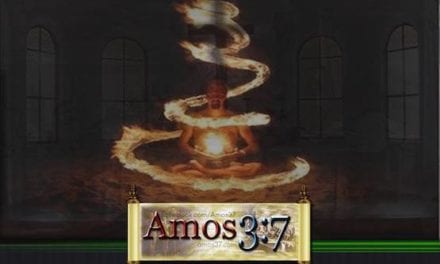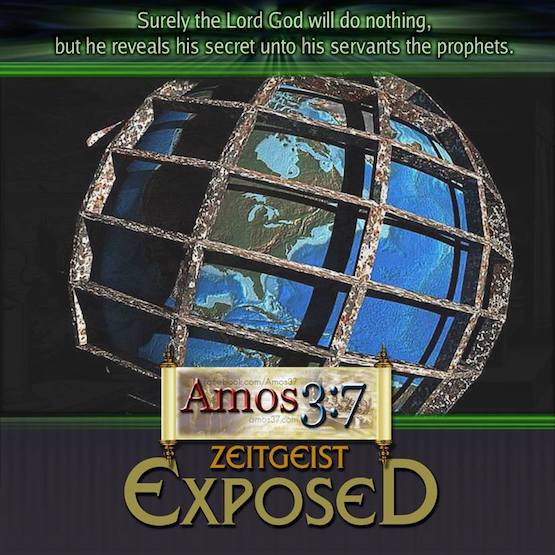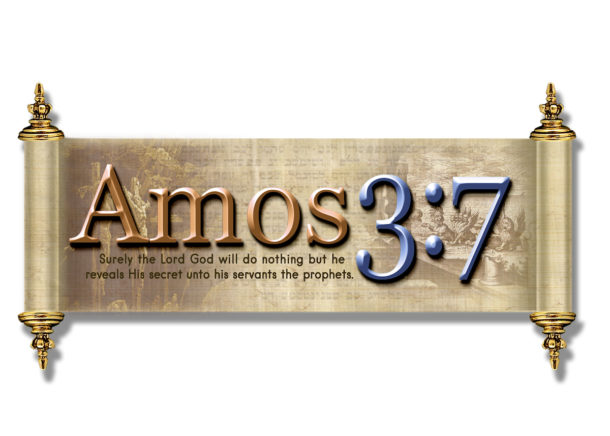Warning: 25-year-old spoilers ahead!
When The Ninth Gate was first released in 1999, it wasn’t a big commercial success. Critics said the movie “meandered aimlessly” and had a “lackluster ending” that not even Johnny Depp’s star power could save.
At first glance, the critics were correct: The Ninth Gate appears to be about Johnny Depp running around various countries while lighting cigarettes at every opportunity he gets. And after about two hours, the movie ends in a rather anti-climactic way.
But at second glance, these critics completely missed the movie’s point. The Ninth Gate is not a Pirates of the Caribbean-style adventure but a highly symbolic story of initiation where the protagonist’s “meandering” is actually an allegorical ritual, and the “anti-climatic ending” is nothing less than spiritual illumination guided by the Whore of Babylon in the flesh.
However, none of this is spelled out in the movie; it is all meant to be decoded. Indeed, the movie’s underlying meaning can only be understood once the symbols and occult references peppered throughout the film are pieced together, like Corso (Johnny Depp’s character) pieces together pages from a Satanic book.
Maybe that explains why, after being panned by critics, the movie is now considered a cult classic. Here’s a look at the much-overlooked meaning of The Ninth Gate.
A Roman Polanski Movie
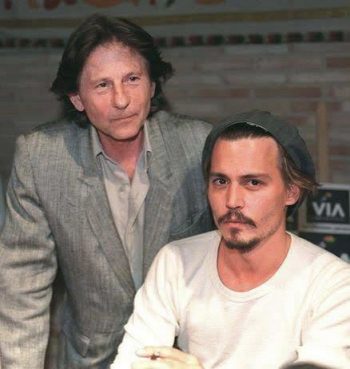
Roman Polanski and Johnny Depp are long-time friends.
In 1968, Roman Polanski released Rosemary’s Baby – a psychological horror movie about a newlywed woman who is groomed by a Satanic cult to give birth to the Antichrist (read my full article about it here).
In a way, this seminal film announced the coming of a new era. It was the end of an innocent and idealistic America and the “birth” of an era influenced by powerful occult movements.
Strangely enough, the movie was attached to real-world events that would make its “prophecy” come true. Less than a year after the release of Rosemary’s Baby, Roman Polanski’s pregnant wife, Sharon Tate, was ritualistically murdered by followers of Charles Manson. The series of gruesome murders carried out by the Manson cult (which reeked of MKULTRA involvement) shocked America to the core and snapped it out of its hippie idealism: The world realized that there were dark forces lurking behind the scenes.
Precisely 30 years after these events – and at the dawn of a new millennium – Polanski released The Ninth Gate. Like in Rosemary’s Baby, Satan is not the “bad guy” but the mysterious protagonist everyone attempts to please. And, like in Rosemary’s Baby, The Ninth Gate‘s subtext is about the coming of a new Satanic era.
Roman Polanski did not miss the opportunity to use numerology to drive his point across. The Ninth Gate is about a demonic book written in 1666. The movie was released in 1999 (1666 reversed). As we’ll see, the movie announces a new era – called, by some occultists, The Aeon of Horus (more on this later).
Yes, the movie is about evil taking over the world. Coincidentally enough, Polanski managed to make this movie happen while still a fugitive from the U.S. justice system for drugging and raping a 13-year-old girl. I guess his Satanic friends were protecting him. And still are.
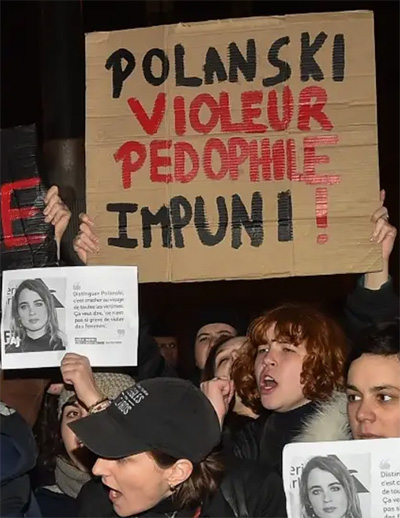
“Polanksi rapist pedophile unpunished!”
Let’s look at the heavy symbolism of The Ninth Gate.
A Movie for the Occult Elite
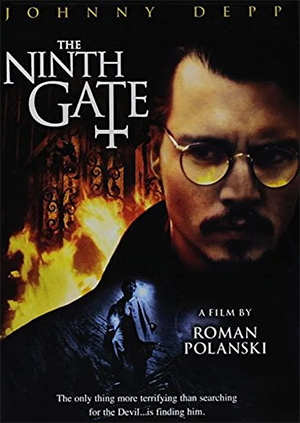
The Ninth Gate is one of many movie covers featuring an inverted cross. The message is: It’s unapologetically satanic.
The movie’s title references the Nine Circles of Hell as described in Dante’s Inferno. They are:
First Circle: Limbo.
Second Circle: Lust.
Third Circle: Gluttony.
Fourth Circle: Greed.
Fifth Circle: Anger.
Sixth Circle: Heresy.
Seventh Circle: Violence.
Eighth Circle: Fraud.
Ninth Circle: Treachery.
Through the movie’s events, the protagonist experiences these nine circles. He engages in lustful behavior with a rich widow, gets greedy with his clients, gets angry at some people, violent at others, and everything else. In Dante’s Inferno, Satan himself is at the center of the ninth circle. Guess what happens to Corso?
The movie’s title is also quite literal. Throughout the movie, Corso goes actual gates to access the privileged information he is looking for.
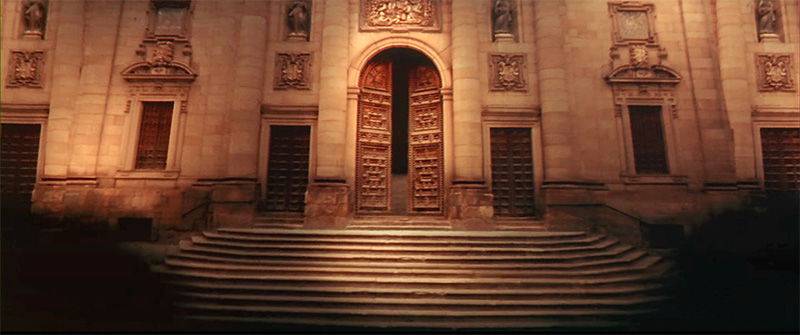
During the opening credits, the viewers are taken through nine gates, including the entrances of posh mansions owned by the occult elite. As we’ll see, the movie was filmed in highly significant locations where actual occult rituals took place.
Corso, the main protagonist of the movie, is hired by a wealthy collector named Boris Balkan to track down copies of a rare and elusive book.
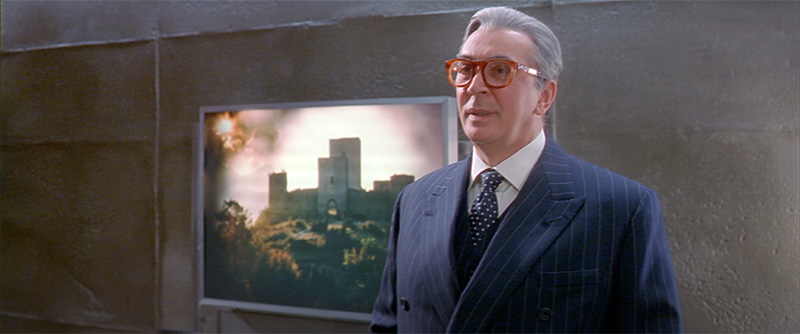
Behind Balkan is an image of a castle in France that will turn out to be the final gate.
Boris Balkan collects rare books that have one point in common: The protagonist is Satan.
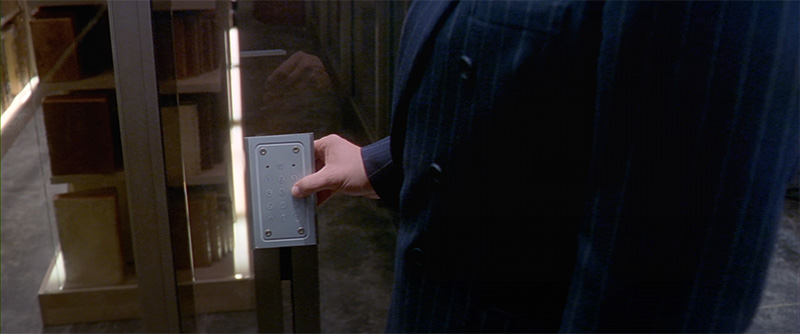
Balkan presses the number 6 three times to grant access to his private collection – one of the many details that are not immediately noticeable in the movie.

Balkan then shows Corso his most prized possession: The Nine Gates of the Kingdom of Shadows. The cover is adorned with an inverted pentagram, the main symbol of black magic.
This book contains nine enigmatic engravings that are said to hold an immense amount of power. As Balkan explains:
“They form a Satanic riddle. Correctly interpreted, with the aid of the original text and sufficient insider information, they’re reputed to conjure up the Prince of Darkness in person.”
However, there’s a major problem: Balkan cannot conjure up anything. So he hires Corso to fetch the two other copies of that book to compare them.
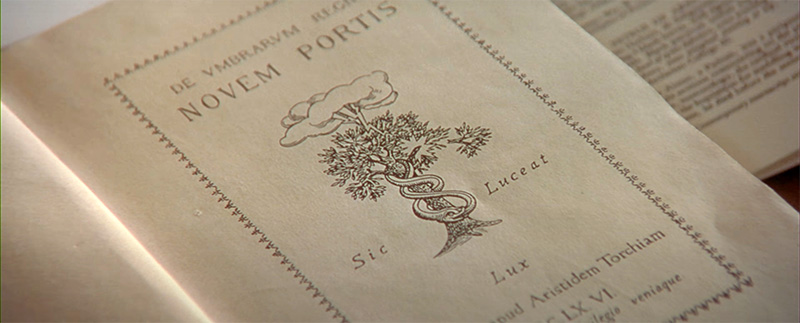
The book’s first page contains an engraving depicting a snake wrapped around a tree.
The image above sums up the entire movie. It is a reference to the serpent in Genesis who offers Eve an apple from the Tree of Knowledge of Good and Evil. In occult circles, this story is of the utmost importance. It is interpreted as Lucifer “saving” humans by giving them the knowledge to become gods.
Around the image is written “Sic Luceat Lux,” which is Latin for “Thus shall the light shine.” Lucifer means “light bringer” in Latin. The entire movie is about Corso seeking “enlightenment.”
As Corso conducts his investigation, he realizes that each book contains three engravings signed by Lucifer himself, and they must be united to conjure up Satan. However, the process is not as simple as merely gathering images. Those who were not “chosen” are destined to fail.
The entire movie is a process of initiation where Corso becomes the “chosen one.” This is highlighted by the fact that the engravings in the book symbolically prophesized Corso’s journey.
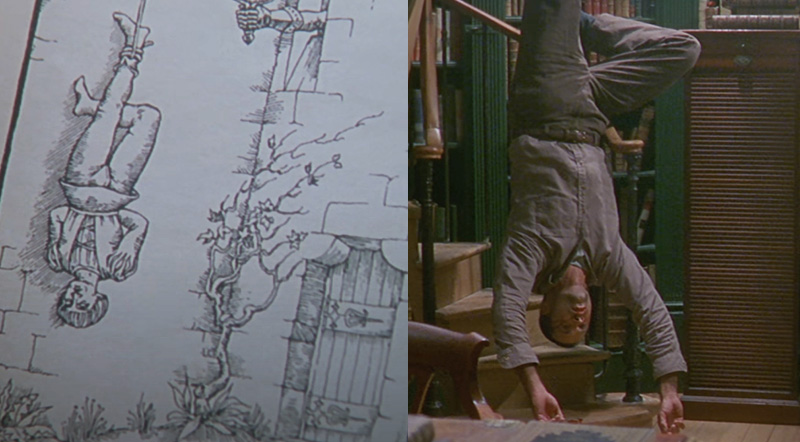
One engraving depicts a man hanging by a leg. Later, Corso finds his friend dead, hanging by a leg. The ritualistic pose is a reminder that dealing with the Devil requires human sacrifice.
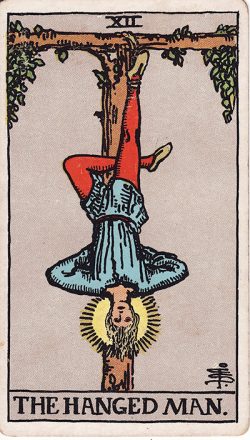
The engraving is inspired by the Hanged Man tarot card, which represents sacrifice to obtain “illumination” (see the halo around the man’s head).
Another strong hint that Corso is the “chosen one”: A mysterious and supernatural woman aids him in his journey.
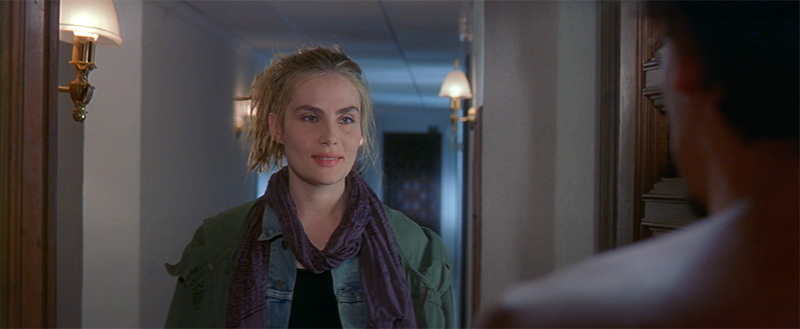
The unnamed “girl” has magical powers and seems to know everything. Emmanuelle Seigner, Roman Polanski’s wife since 1989, played the role.
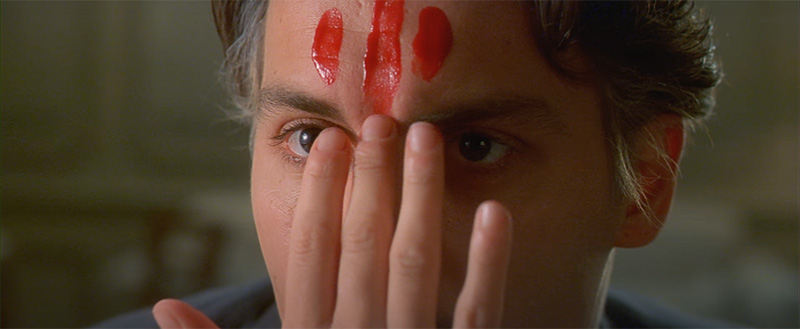
The girl marks Corso’s forehead with her blood. He’s definitely Satan’s chosen one.
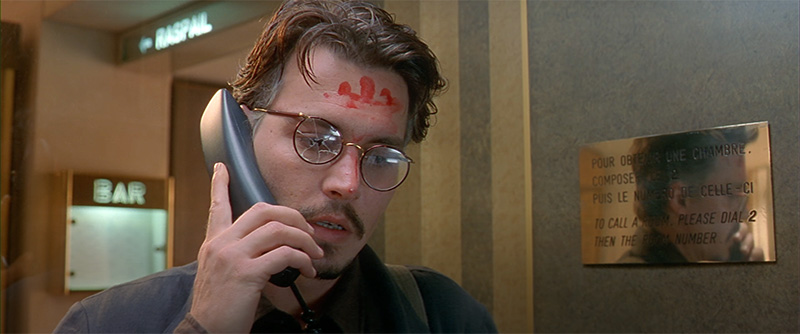
Corso walks around for a while with the girl’s blood on his forehead and glasses with a broken lens (one-eye sign). The message: He turned Satanic. This scene is so symbolic that it is used on the movie’s cover art.
While Corso initially found this Satanic stuff ridiculous and was only concerned about his paycheck, he gradually changed. Towards the end of the journey, he did not care about money anymore, he wanted to complete his spiritual quest.
And his quest took him to some highly symbolic locations.
Gates of the Occult Elite
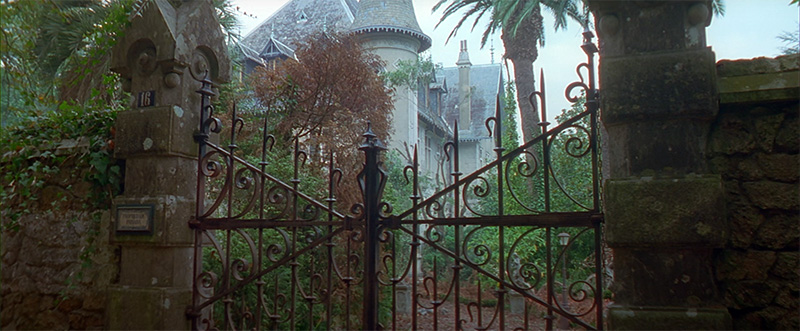
Corso finds the second copy of the book at a highly significant place: Chalet Biester in Portugal.
Like every other occult detail highlighted in this article, the significance of this place is not specifically mentioned in the movie.
Chalet Biester is a mansion replete with occult symbolism and the site of actual Masonic rituals. It was conceived by architect José Luis Monteiro, who was also behind Quinta da Regaleira—a profoundly occult mansion to which I dedicated an entire Sinister Sites article analyzing it. As explained in that article, the Sintra area in Portugal is drenched in “mystical” energy that drew in rich and powerful people seeking to live out their occult fantasies.
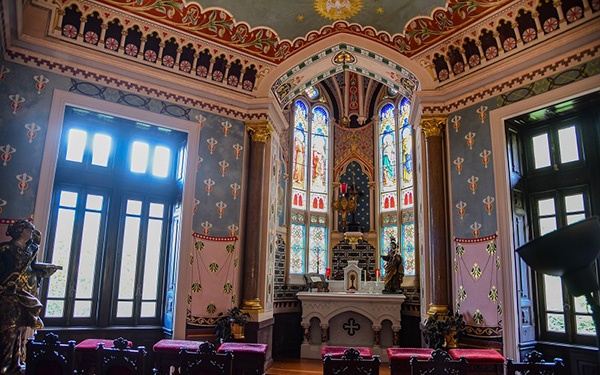
Chalet Biester contains a chapel covered in symbolism relating to Freemasonry and the Knights Templar.
Under the chapel is Chalet Biester’s true purpose.
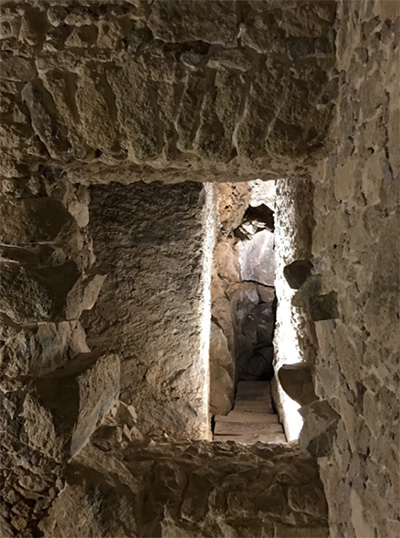
In the basement is a dark and cavernous Masonic initiation chamber meant to replicate the “authentic” rites practiced in Ancient Egypt.
None of this is mentioned in the movie. In the scenes involving the mansion, Corso examined the Satanic book and eventually discovered the home’s owner ritualistically murdered in a fountain. Was Polanksi’s goal to “charge” the movie with authentic occult energy? Because other symbolic scenes were filmed in other symbolic locations.
Later in the movie, Corso discovers that an occult secret society named The Order of the Silver Serpent has been perpetuating the secrets of the book The Nine Gates. When Corso moves to investigate this order, he is led to another highly symbolic gate.
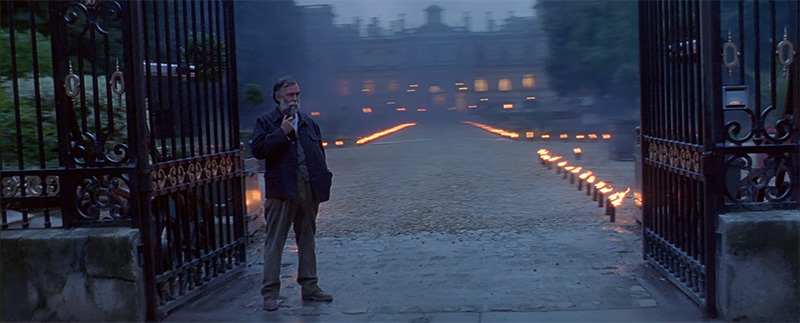
Corso arrives at the entrance of a French château where the Order of the Silver Serpent carries out its rituals.
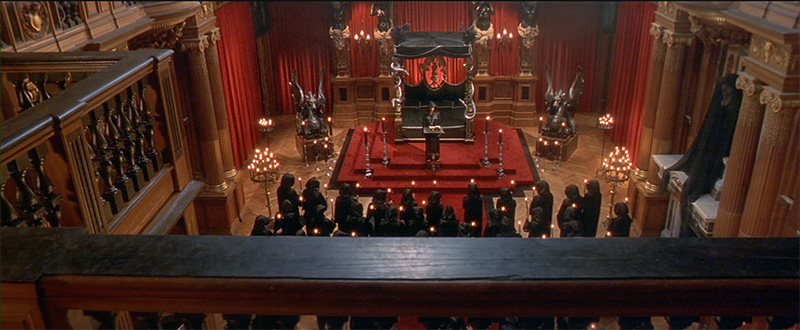
Inside, people in black robes and black candles praise Satan.
An ex-member of the order told Corso that it “degenerated into a social club for bored millionaires and celebrities who use its meeting as an excuse to indulge in their jaded sexual appetites.” Furthermore, these people are “under the impression that they owe their money and success to members of the order.”
The scenes involving the order were filmed in Château de Ferrières, near Paris. Guess who built this place? Baron James de Rothschild.
Yes, the occult rituals in the movie were filmed in a château built by the most occult elite family in world history. In fact, this specific place was the site of some highly bizarre Rothschild events.

Marie-Hélène de Rothschild welcomes guests to her “Surrealist Ball” at Château Ferrières in 1972. She’s the one with horns on her head.

As explained in my article about this occult elite party, the event was replete with references to cannibalism and other debaucherous practices.
Corso’s final “initiation site” is also highly symbolic.
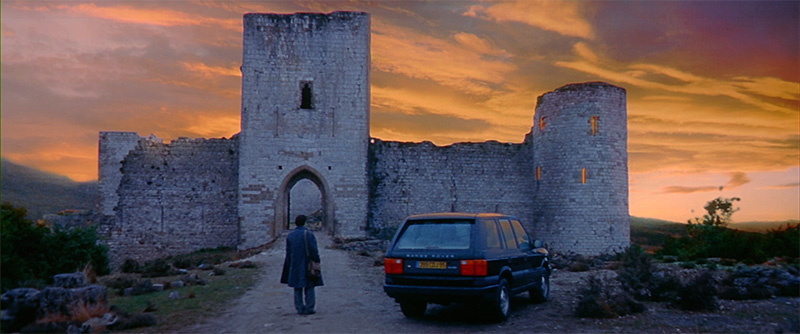
Corso arrives at the final gate. An image of that place was framed behind Boris Balkan at the movie’s beginning.
Once again, these scenes were filmed at a highly symbolic location: Château de Puivert.
This 12th-century castle is not as luxurious as the Rothschild mansion. However, its history is significant: It was built by lords who practiced Cathartism, a sect that was considered heretical by the Church.
Without going too deep into this rabbit hole of history, Cathars reinterpreted Christianity through a Gnostic lens. Indeed, they believed in a dualistic Gods where the God of the Old Testament was considered to be Satan, and the God of the New Testament was considered “good.” Furthermore, they rejected the concept of Jesus’ ressurection and interpreted it as a form of reincarnation. In short, they had much more in common with occult philosophies than with Christianity and were violently repressed by the Church.
Corso would find “illumination” in this spiritually charged place. But before this happens, something highly symbolic happens: Sex. Weird, demonic sex.

As the château burns, Corso copulates with the girl. No, they’re not “hooking up.” It’s a bit more profound than that.
After the weirdest date ever, the girl guides Corso to the final engraving needed to conjure up Satan.
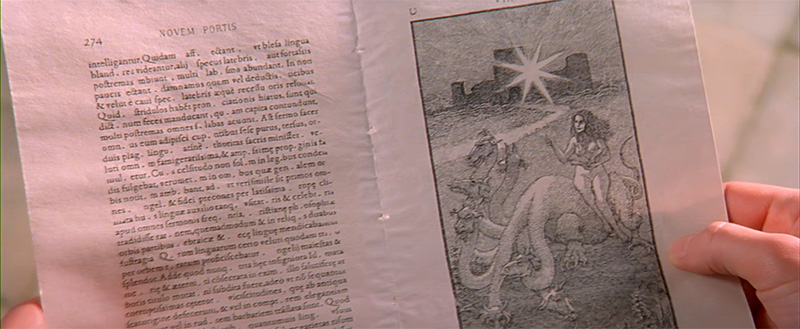
The girl is depicted sitting on a beast with seven heads.
Through symbolism, the movie subtly reveals the true identity of the girl: She’s the Whore of Babylon.
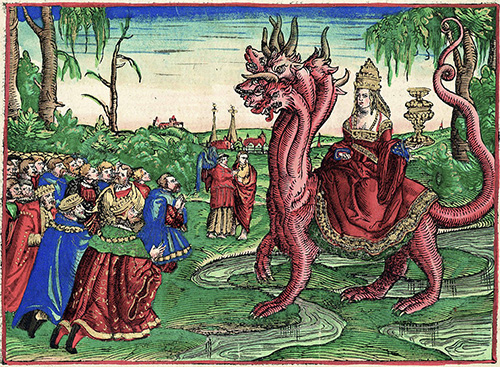
An illustration of the Whore of Babylon from Martin Luther’s 1534 translation of the Bible.
So Roman Polanski cast his wife to play the role of the Whore of Babylon “with whom the kings of the earth have committed fornication, and the inhabitants of the earth have been made drunk with the wine of her fornication.” Weird.
But why did this scene happen? Like in Rosemary’s Baby, The Ninth Gate announces the coming of a new era.
In the Book of Revelation, the Whole of Babylon embodies “spiritual adultery.” She represents fallen humanity’s determination to construct a godless society ruled by greed and immorality. She announces the coming of an age ruled by Satan (the dragon) and the Antichrist (the beast).
The Whore of Babylon is revered in occult circles, such as in Aleister Crowley’s Thelema (whom he calls Babalon).
“In her most abstract form, Babalon represents the female sexual impulse and the liberated woman. In the creed of the Gnostic Mass she is also identified with Mother Earth, in her most fertile sense. Along with her status as an archetype or goddess, Crowley believed that Babalon had an earthly aspect or avatar; a living woman who occupied the spiritual office of the ‘Scarlet Woman’. The role of the Scarlet Woman was to help manifest the energies of the Aeon of Horus.”
As stated above, The Whore of Babylon is believed to bring about the Aeon of Horus. In Thelema, the last 2,000 years were the Aeon of Osiris, characterized by the worship of a single male god and patriarchal values. According to Crowley, the world entered the Aeon of Horus in the 20th century, characterized by humans wanting to find God within themselves.
And that’s exactly what happens to Corso.
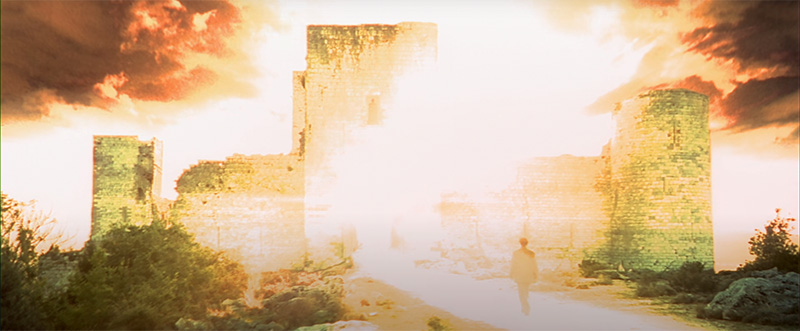
In the movie’s final scene, Corso enters the final gate as a powerful light causes the screen to fade to white.
With the help of the Great Whore of Babylon, Corse has reached godhood.
In Conclusion
While The Ninth Gate wasn’t fully embraced by the masses, it was not truly made for the masses. It was made by occultists for occultists. It featured their favorite stories, symbols, and locations – all of which can only be identified with some acquired knowledge. Like the allegorical myths shared in secret societies, The Ninth Gate had an exoteric meaning for the “profane” and an esoteric meaning for the “initiate.”
Corso’s tale is somewhat similar to Christ’s, but … anti. While the world’s richest people spent their entire lives and wealth attempting to become kings on Earth, the “chosen one” was a humble and unassuming nomad. While Jesus performed miracles and led people to paradise, Corso went through the nine gates … of hell.
Released right before the coming of a new millennium, this Roman Polanski movie announced the coming of a new era where the satanic elite would become more visible. And, 25 years later, the Satanic prophesy seems to be coming true.
The post The Much-Overlooked Symbolism in Roman Polanski’s “The Ninth Gate” first appeared on The Vigilant Citizen.


